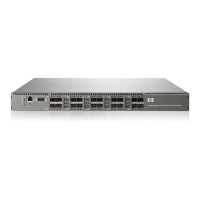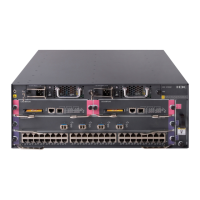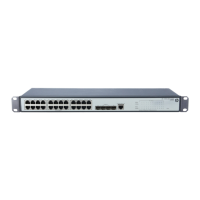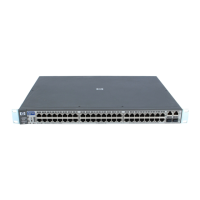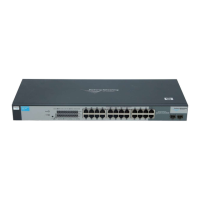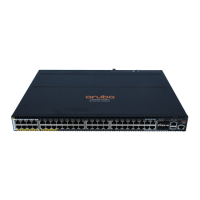HP StorageWorks SN6000 Fibre Channel Switch Command Line Interface Guide 103
• E_Port events
• Management server events
• Name server events
• Port events
• Switch management events
• Simple Network Management Protocol (SNMP) events
• Zoning events
• Call Home events
The following example configures the event log to record switch management events with warning and
critical severity levels associated with ports 0–3. Entering the set log save command ensures that this
configuration is preserved across switch resets.
SN6000 FC Switch (admin) #> set log component switch
SN6000 FC Switch (admin) #> set log level warn
SN6000 FC Switch (admin) #> set log port 0 1 2 3
SN6000 FC Switch (admin) #> set log save
Displaying the event log configuration
To display all event log configuration settings, enter the show log settings command, as shown in the
following example:
SN6000 FC Switch #> show log settings
Current settings for log
------------------------
Started True
FilterComponent NameServer MgmtServer Zoning Switch Blade Port Eport Snmp CLI
QFS
FilterLevel Info
DisplayLevel Critical
FilterPort 0 1 2 3 4 5 6 7 8 9 10 11 12 13 14 15 16 17 18 19 20
Restoring the event log configuration
To return the event log configuration to the factory default, enter the set log restore command in an
Admin session, as shown in the following example:
SN6000 FC Switch (admin) #> set log restore
Clearing the event log
To delete all entries in the event log, enter the set log clear command in an Admin session, as shown
in the following example:
SN6000 FC Switch (admin) #> set log clear
Logging to a remote host
The switch comes from the factory with local logging enabled, which instructs the switch firmware to
maintain an event log in switch memory. The switch can also be configured to log events to a remote host
that supports the syslog protocol. This, however, requires that you enable remote logging on the switch and
specify an IP address for the remote host.
NOTE: To log event messages on a remote host, you must edit the syslog.conf file on the remote host
and then restart the syslog daemon. The syslog.conf file must contain an entry that specifies the name
of the log file. Add the following line to the syslog.conf file. Note that in this command, a <tab>
separates the selector field (local0.info) from the action field, which contains the log file path name
(/var/adm/messages/messages.name).
local0.info <tab> /var/adm/messages/messages.name
Consult your host operating system documentation for information on how to configure remote logging.
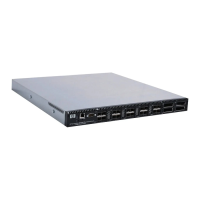
